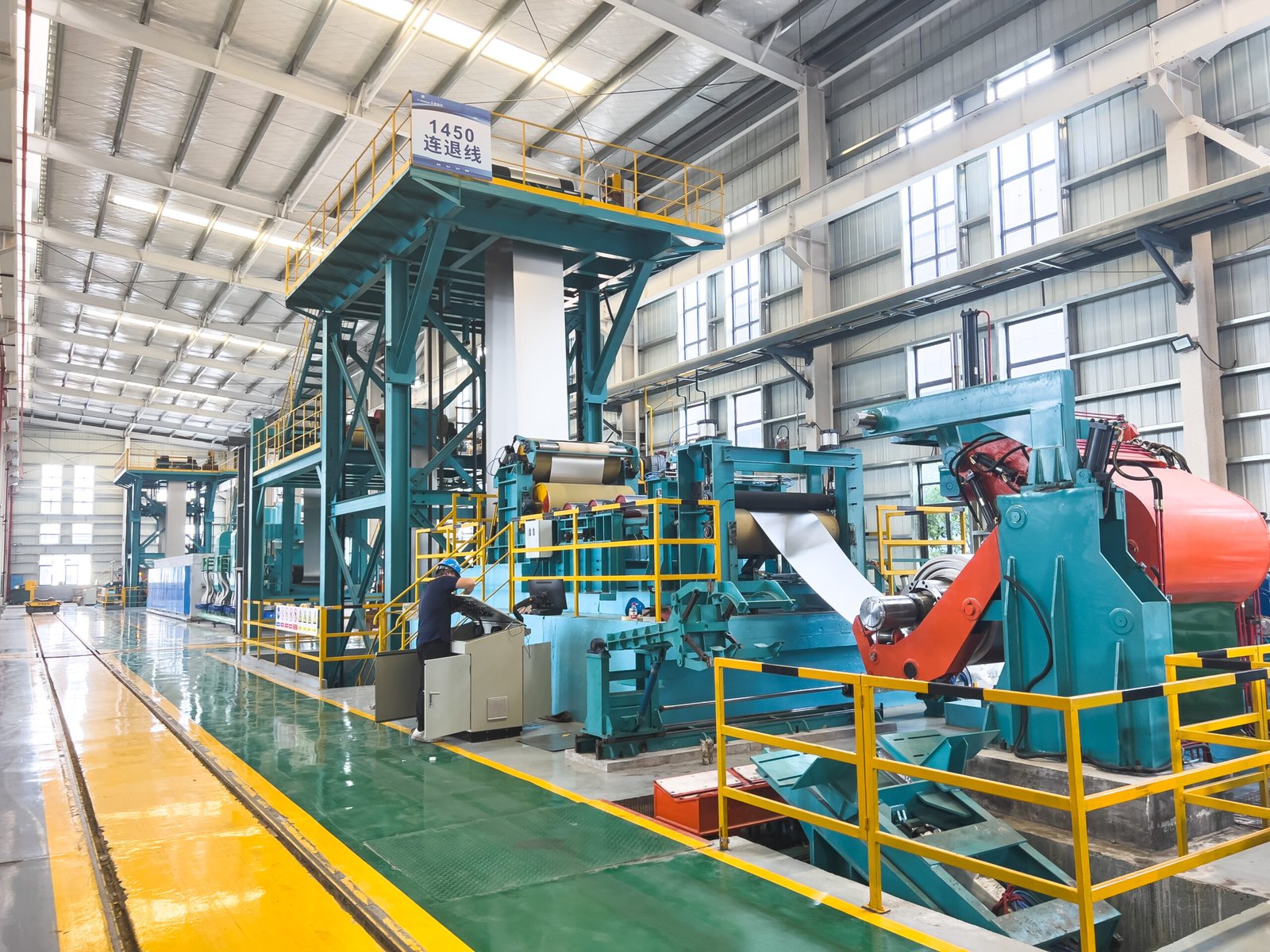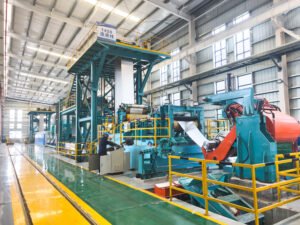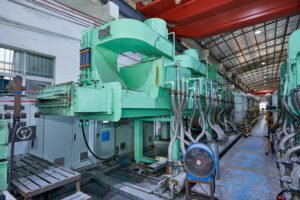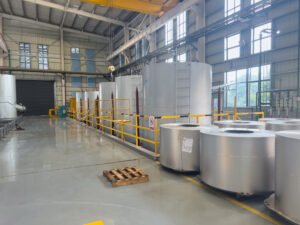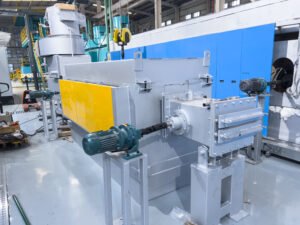How to Fix Copper Annealing Defects: Black Spots, Oxidation, and Grain-Coarsening
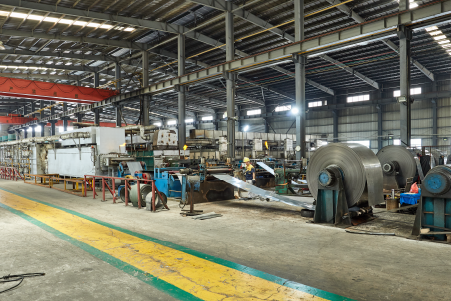
Struggling with inconsistent copper annealing results that lead to costly rejects and unhappy customers? You're not alone. Many in the industry face these frustrating defects daily. The good news is, understanding the root causes is the first step towards achieving flawless, high-quality copper products consistently.
Common copper annealing defects like black spots in copper, oxidation, and grain-coarsening primarily stem from improper atmospheric control, incorrect temperature settings, or contaminants. Addressing these issues through precise process management and a controlled furnace environment is crucial for achieving desired material properties and surface finish.
These defects don't just mar the appearance of your copper; they can significantly compromise its mechanical and electrical properties, leading to downstream processing issues and a tarnished reputation. Imagine the relief of consistently producing bright, perfectly annealed copper. We're here to guide you through diagnosing and fixing these common problems, ensuring your operations run smoothly and efficiently.
In my years at AKS Furnace, I've seen firsthand how these issues can impact a business. It's not just about the material; it's about the time, energy, and resources lost. But with a deeper understanding of the annealing process and the science behind these defects, we can implement effective solutions. This involves looking critically at our current practices, embracing technological advancements in furnace design, and sometimes, rethinking our approach to process control. Let's explore these challenges and solutions together.
What causes black spots in copper during annealing processes?
Are unsightly black spots on your annealed copper causing production headaches and customer complaints? This common issue often points to contamination or atmospheric imbalances within your furnace. Identifying the exact culprit is key to eliminçating these defects and ensuring a pristine finish on your copper products.
Black spots on copper during annealing are primarily caused by reactions with sulfur compounds, residual lubricants or drawing compounds, or even iron contamination in copper. These substances react with copper at annealing temperatures, leading to localized discoloration and surface defects if not properly managed.
The appearance of these black spots can be incredibly frustrating, especially when you're striving for a high-quality, bright finish demanded by industries like electronics or decorative applications. It's a problem I've encountered many times with clients who are meticulous about their upstream processes, only to be let down by the final annealing stage. Understanding the chemistry and the conditions that lead to these spots is the first step towards a consistent, defect-free output, allowing you to meet even the most stringent quality standards.
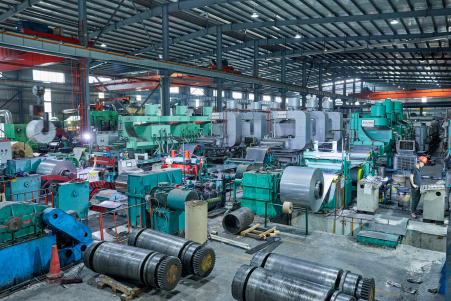
Black spots are more than just a cosmetic nuisance; they can indicate deeper issues within your annealing process that might affect the copper's performance characteristics. For instance, if the spots are due to sulfur, it might originate from lubricants with high sulfur content, atmospheric contamination (especially if using fuel gas with sulfur impurities), or even from certain types of refractory materials within older furnaces. When these sulfur compounds come into contact with hot copper, they form copper sulfide (Cu₂S), which is typically black or dark grey. Similarly, residual oils or greases from prior forming or drawing operations, if not thoroughly cleaned, can carbonize on the copper surface at annealing temperatures. This carbon residue can appear as black, sooty deposits. This is particularly problematic because these carbonaceous residues can interfere with subsequent plating or coating processes, leading to adhesion failures. Iron contamination, often from tooling, handling equipment, or even rust particles within the furnace, can also lead to dark spots. At high temperatures, iron can diffuse into the copper surface or form iron oxides that appear dark. Therefore, a comprehensive diagnostic approach is necessary. This involves scrutinizing your entire process chain, from raw material handling and pre-cleaning to the annealing atmosphere and furnace maintenance. I recall a client, "CopperTech Solutions," a manufacturer of fine copper wires for high-frequency cables, who faced a persistent black spot issue. Their initial thoughts were focused on the furnace atmosphere, but after a thorough audit, we discovered that the drawing lubricant they were using had a higher-than-specified sulfur content, and their pre-annealing cleaning process wasn't entirely effective in removing it. Switching to a low-sulfur lubricant and enhancing their ultrasonic cleaning line resolved the issue, drastically reducing their reject rate. This underscores the importance of a holistic view when troubleshooting such defects. The solution often lies in a combination of material selection, meticulous cleaning, and precise atmospheric control within the annealing furnace. At AKS Furnace, we emphasize the importance of using high-purity protective atmospheres, like dissociated ammonia or hydrogen-nitrogen mixtures, and ensuring the furnace muffle or chamber is well-sealed to prevent ingress of contaminants. Our Bright Annealing Furnaces, for example, are designed with advanced atmospheric control systems and materials that minimize such contamination risks, helping our clients achieve consistently bright and spotless annealed copper.
Understanding Contaminant Sources
The journey to eliminating black spots begins with a thorough investigation into potential contaminant sources. These can be surprisingly varied and often lurk in unexpected places. One primary area to examine is the pre-annealing cleaning process. Are your copper coils or strips meticulously cleaned to remove all traces of drawing lubricants, oils, and other residues from previous manufacturing steps? Even minute amounts of these substances can carbonize or react with the copper surface at annealing temperatures, leading to the dreaded black deposits. For instance, lubricants containing sulfur, chlorine, or even certain organic compounds can be particularly problematic. As I mentioned with CopperTech Solutions, their drawing lubricant was a key factor. A study published in the Журнал "Технология обработки материалов highlighted that residual hydrocarbon-based lubricants, when not fully removed, can lead to carbon deposition ranging from 0.5 to 5 µm thick, which can be seen as black spots or a general darkening.
Another critical area is the furnace atmosphere itself and the materials used in furnace construction. If the protective atmosphere – be it hydrogen, nitrogen, or a mixture – is not of sufficient purity or contains impurities like oxygen, water vapor, or sulfur compounds (perhaps from the gas source or leaks in the system), these can react with the hot copper. For example, if there's a slight air leak into the furnace muffle when operating at, say, 650°C for copper annealing, the oxygen will readily react with the copper. Furthermore, the furnace lining, conveyor belts (in continuous furnaces), or charge carriers can sometimes be sources of contamination. Older refractory materials might outgas certain volatile compounds at high temperatures, or metallic components within the furnace could shed microscopic particles that deposit on the copper. I remember a case where a client's older furnace had a deteriorating muffle, and small metallic flakes from the muffle material were the cause.
Finally, consider the handling and storage of copper before and after annealing. Exposure to corrosive environments, improper packaging materials, or even handling with contaminated gloves can introduce surface contaminants that manifest as black spots post-annealing. A holistic approach to cleanliness and material handling throughout the entire production cycle is paramount. At AKS, our furnace designs, like the Bright Annealing Furnace, often incorporate high-purity ceramic fiber insulation and robust Inconel or stainless steel muffles precisely to minimize such internal contamination sources, ensuring a cleaner annealing environment. We also advise clients on best practices for material preparation and handling.
The Role of Furnace Atmosphere and Temperature
The furnace atmosphere plays a pivotal role in preventing black spots. For bright annealing of copper, a reducing or inert atmosphere is essential. Commonly used atmospheres include cracked ammonia (75% H₂, 25% N₂), pure hydrogen, or nitrogen-hydrogen mixtures. The key is to maintain a very low dew point and minimal oxygen content. If the atmosphere becomes even slightly oxidizing due to air leaks or impurities in the gas supply, copper oxides can form, which may appear as discoloration or contribute to the formation of other defect complexes. For instance, an oxygen level above just a few parts per million (ppm) can be detrimental at typical copper annealing temperatures (450°C to 750°C). Our AKS Bright Annealing Furnaces are equipped with precision gas mixing and monitoring systems to ensure the atmosphere integrity is maintained, often keeping oxygen levels below 5 ppm.
Temperature control is equally critical. Overheating can exacerbate the reactions that cause black spots. Higher temperatures accelerate the rate at which contaminants react with the copper surface. If there are residual lubricants, for example, excessive temperatures can cause them to crack and deposit carbon more aggressively. Moreover, inconsistent temperature distribution within the furnace can lead to some parts of the copper charge being overheated, even if the average temperature setting seems correct. This is why uniform heating, a feature we focus on in our furnace designs through multi-zone heating control, is so important. We've seen cases where incorrect thermocouple placement or malfunctioning heating elements led to localized overheating and subsequent spotting.
The interaction between temperature and atmosphere is also significant. For example, the reactivity of sulfur with copper increases with temperature. If trace sulfur is present, higher annealing temperatures will lead to more prominent copper sulfide formation. Therefore, optimizing the annealing temperature to the lowest point that still achieves the desired metallurgical properties (softness, grain size) while minimizing the risk of reactions is a delicate balancing act. We often work with clients like CopperTech Solutions to fine-tune their annealing cycles, sometimes recommending slightly lower temperatures or shorter soak times if their pre-cleaning isn't absolutely perfect, as a pragmatic approach to reducing defect rates.
Preventative Measures and Solutions
Preventing black spots requires a multi-pronged strategy focusing on cleanliness, atmospheric purity, and precise process control. The first line of defense is an impeccable pre-cleaning regime. This often involves multi-stage cleaning, starting with degreasing to remove bulk oils, followed by rinsing, and potentially an acid pickle or ultrasonic cleaning to remove stubborn residues and light surface oxides. For CopperTech Solutions, upgrading their ultrasonic cleaning system and ensuring proper bath maintenance was a game-changer. Material selection for lubricants is also key; opting for low-sulfur, ash-free, and easily removable lubricants can significantly reduce the contamination load.
Maintaining a high-purity, reducing furnace atmosphere is non-negotiable. This involves using high-quality bottled gases or on-site gas generators with robust purification systems. Regular checks for leaks in the furnace muffle, seals, and gas lines are essential. At AKS, our Bright Annealing Furnaces feature tightly sealed muffles and positive pressure systems to prevent air ingress. We also integrate oxygen and dew point analyzers to continuously monitor and control the atmosphere quality. For example, maintaining a dew point below -40°C is a common target to prevent issues related to water vapor.
Finally, precise temperature control and furnace maintenance are crucial. Calibrating thermocouples regularly, ensuring uniform heat distribution, and selecting appropriate annealing temperatures and cycle times for the specific copper alloy and dimensions are vital. Furnace components themselves should be made from non-contaminating materials. For instance, using high-alloy stainless steel or Inconel for muffles and conveyor belts minimizes the risk of iron or other metallic contamination. Regular furnace burnouts or cleaning cycles, as per the manufacturer's recommendation, can also help remove accumulated contaminants. One client producing copper strips for automotive heat exchangers found that implementing a weekly high-temperature burnout cycle for their mesh belt furnace, as we advised, drastically reduced intermittent spotting issues they were facing.
Here's a quick comparison of common cleaning methods:
| Метод очистки | Effectiveness on Oils | Effectiveness on Oxides | Стоимость | Complexity | Типовое применение |
|---|---|---|---|---|---|
| Обезжиривание растворителем | Высокий | Низкий | Умеренный | Умеренный | Heavy oils, greases |
| Щелочная очистка | От умеренного до высокого | От низкого до умеренного | Низкий | Низкий | General purpose cleaning |
| Acid Pickling | Низкий | Высокий | Умеренный | Высокий | Oxide removal, surface etching |
| Ультразвуковая очистка | Высокий | Умеренный | Умеренный | Умеренный | Fine particles, complex shapes |
| Electrolytic Cleaning | Высокий | Высокий | Высокий | Высокий | High-purity requirements |
By systematically addressing these areas – pre-cleaning, atmospheric control, and furnace management – the incidence of black spots can be significantly minimized, leading to higher quality annealed copper products.
Black spots indicate contaminationПравда
Black spots on annealed copper are primarily caused by contaminants like sulfur compounds, residual lubricants, or iron particles reacting with the copper surface at high temperatures.
Higher temperatures prevent spotsЛожь
Excessive temperatures actually accelerate the reactions that cause black spots by making contaminants more reactive with the copper surface.
How does oxidation affect copper annealing and how can it be prevented?
Frustrated by discolored or scaled copper after annealing, hindering subsequent processing or compromising the final product's appeal? This is likely due to oxidation, a common foe in heat treatment. Understanding its mechanisms and prevention is crucial for achieving that desirable bright, clean copper surface.
Oxidation during copper annealing occurs when copper reacts with oxygen or water vapor at elevated temperatures, forming copper oxides (Cu₂O or CuO). It can be prevented by using a high-purity protective (reducing or inert) atmosphere and ensuring furnace integrity to exclude air.
Oxidation is a persistent challenge because copper has a natural affinity for oxygen, especially when heated. Even a small amount of oxygen or moisture in the annealing atmosphere can lead to a dull, oxidized surface, ranging from a light tarnish to heavy scale. This not only affects the aesthetic quality but can also impact electrical conductivity, solderability, and formability. For businesses like ours at Печь AKS1, providing solutions that guarantee a bright, oxide-free finish is paramount, as it directly impacts our clients' product quality and market competitiveness. We'll delve into how you can effectively shield your copper from this unwelcome reaction.
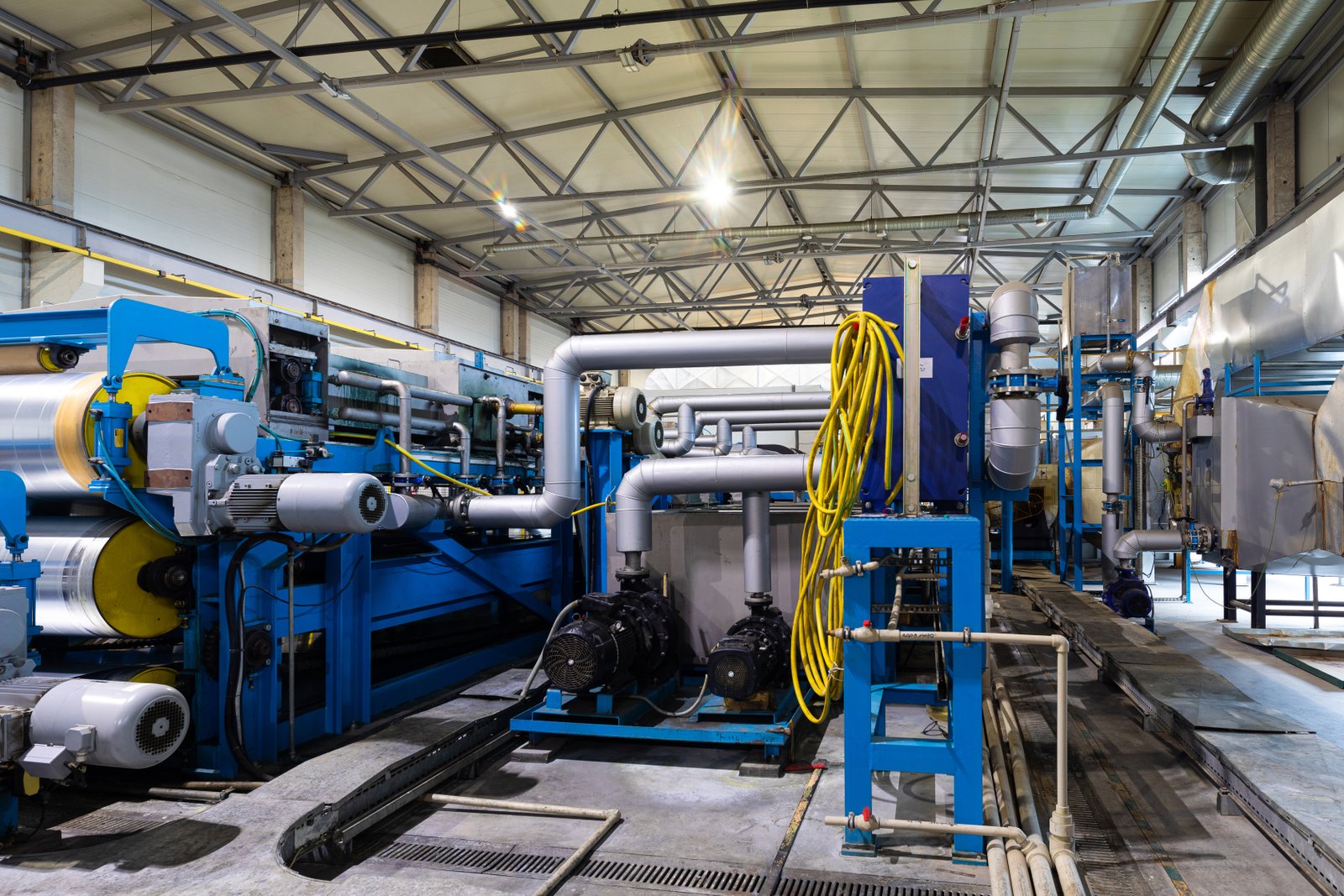
The fight against oxidation in copper annealing is essentially a battle to control the immediate environment surrounding the copper as it's heated and cooled. Copper's tendency to oxidize is well-documented by Диаграммы Эллингема2, which show that copper oxides are thermodynamically stable over a wide range of temperatures in the presence of even small partial pressures of oxygen. The primary culprits are, of course, oxygen (O₂) from air leaks or impure protective gases, and water vapor (H₂O), which can also act as an oxidizing agent at annealing temperatures, especially if the hydrogen content in the atmosphere isn't high enough to maintain a sufficiently low dew point. The resulting oxides, primarily cuprous oxide (Cu₂O, reddish) and cupric oxide (CuO, black), form layers on the copper surface. These layers are often brittle, can flake off, and crucially, alter the surface properties. For instance, an oxidized surface will have higher electrical contact resistance and will be difficult to solder or braze without aggressive fluxing. In applications like electrical conductors or electronic components, this is simply unacceptable. I recall working with a manufacturer of precision copper connectors, "ElectroConnect Ltd.," who were experiencing intermittent soldering failures. The root cause was traced back to very subtle, almost invisible, oxidation layers formed during annealing due to a fluctuating dew point in their nitrogen-based atmosphere. Implementing a more robust gas purification system and tighter dew point control (aiming for below -50°C) on their AKS Bell-Type Annealing Furnace resolved their soldering issues and improved overall product consistency. This highlights how critical even minute atmospheric variations can be. Beyond just surface quality, heavy oxidation can lead to material loss and dimensional changes, which is a concern for precision parts. Therefore, preventing oxidation is not just about aesthetics; it's about maintaining the intrinsic material properties and ensuring fitness for purpose.
The Chemistry of Copper Oxidation at Annealing Temperatures
Understanding the chemical reactions involved is key to preventing copper oxidation. Copper primarily forms two oxides: cuprous oxide (Cu₂O) and cupric oxide (CuO). At typical annealing temperatures (ranging from 300°C to 750°C, depending on the desired properties and alloy), if oxygen is present, copper will react:
- 2Cu + ½O₂ → Cu₂O (Cuprous oxide - reddish)
- Cu₂O + ½O₂ → 2CuO (Cupric oxide - black)
Cu₂O typically forms first as a thin, adherent layer. If more oxygen is available or temperatures are higher/times longer, Cu₂O can further oxidize to CuO, which is often darker and less adherent. Water vapor can also be an oxidizing agent, especially in atmospheres with insufficient reducing potential:
Cu + H₂O ⇌ CuO + H₂ (or Cu₂O + H₂)
The equilibrium of this reaction is critical. In a hydrogen-rich atmosphere, the reaction is driven to the left, reducing any oxides back to copper. This is why hydrogen is a powerful component in protective atmospheres for bright annealing. The partial pressure of oxygen required to prevent oxidation is extremely low at annealing temperatures. For instance, according to thermodynamic data, at 600°C, the equilibrium oxygen partial pressure for the Cu/Cu₂O reaction is in the order of 10⁻¹⁶ atm. This is far below what can be achieved by simply purging with industrial nitrogen; a reducing agent or extremely high purity inert gas is necessary. This is why at AKS Furnace, our Bright Annealing Furnaces are designed to operate with atmospheres like cracked ammonia (H₂ + N₂) or pure hydrogen, where the strong reducing potential of hydrogen actively scavenges any trace oxygen and reverses incipient oxidation.
The rate of oxidation is also highly dependent on temperature. The higher the temperature, the faster the diffusion of oxygen into the copper and the growth of the oxide layer, following parabolic or logarithmic rate laws depending on the thickness and temperature. This means that even brief exposures to an oxidizing environment during the high-temperature segments of the annealing cycle (heating and soaking) can be detrimental. Furthermore, the cooling phase is equally critical. If copper is exposed to air while still hot (e.g., above 150-200°C), it will readily tarnish or oxidize. This necessitates cooling under the protective atmosphere until the copper is sufficiently cool to resist atmospheric oxidation. Our continuous Bright Annealing Furnaces incorporate extended cooling chambers with controlled atmosphere circulation to ensure bright parts exit the furnace.
Designing an Effective Protective Atmosphere
The cornerstone of preventing oxidation is the effective use of a protective atmosphere. The choice of atmosphere depends on factors like cost, safety, the specific copper alloy, and the desired surface finish.
Commonly used atmospheres for copper annealing include:
- Dissociated Ammonia (DA Gas): Composed of roughly 75% Hydrogen (H₂) and 25% Nitrogen (N₂). It's highly reducing due to the hydrogen content and relatively economical if an ammonia dissociator is available. The high hydrogen content ensures a very low dew point and actively reduces any surface oxides. This is a popular choice for many of our clients using AKS Bright Annealing Furnaces.
- Hydrogen (H₂): Pure hydrogen offers the strongest reducing potential and produces the brightest finishes. However, it's more expensive and requires careful handling due to its flammability. It's often used for critical applications where the utmost purity and brightness are required.
- Nitrogen-Hydrogen Blends (N₂-H₂): These blends, typically with 2-10% hydrogen, offer a good balance of reducing power, cost, and safety. The hydrogen content can be adjusted based on the application. Many modern furnaces are equipped with gas blending systems for this purpose.
- Pure Nitrogen (N₂): While often considered inert, industrial nitrogen can contain trace oxygen and moisture. For critical bright annealing, high-purity nitrogen (99.995% or better) with a very low dew point is required. Even then, without any reducing component, it may not be sufficient to prevent very slight tarnishing or to reduce pre-existing light oxides.
- Exothermic or Endothermic Gases: These are generated by combusting hydrocarbons and can be tailored to be reducing. However, they contain CO, CO₂, H₂, H₂O, and N₂, and precise control is needed to avoid sooting or decarburization (less of a concern for pure copper, but relevant for alloys). They are less common now for high-quality copper bright annealing compared to H₂/N₂ based atmospheres.
Regardless of the base gas, maintaining its purity within the furnace is crucial. This means ensuring the furnace muffle or chamber is gas-tight. Positive pressure should be maintained inside the furnace to prevent air ingress. Regular leak checks, proper door seals, and purging procedures are vital. For instance, before starting an annealing cycle, the furnace should be thoroughly purged with the protective gas to reduce the oxygen level to a few ppm. Our AKS furnaces often incorporate automated purge cycles and interlocks to ensure this. The dew point of the atmosphere is a critical parameter, as moisture is a source of oxygen. A dew point of -40°C or lower is generally targeted. This might require upstream gas dryers or using high-purity bottled gases.
Furnace Design and Operational Best Practices
Beyond the atmosphere itself, furnace design and operational practices play a significant role in preventing oxidation.
Furnace Design:
- Gas-Tight Integrity: The furnace chamber or muffle must be exceptionally well-sealed. Welded joints, high-quality door seals (e.g., silicone, fiber seals with water cooling), and careful construction are paramount. Our AKS Bright Annealing Furnaces utilize continuously welded muffles made of heat-resistant alloys like Inconel or 310S stainless steel to ensure long-term gas tightness.
- Atmosphere Circulation: Proper circulation of the protective atmosphere ensures uniform gas composition throughout the charge and helps purge away any outgassed contaminants. Fans or directed gas flow can be incorporated.
- Cooling Zone Efficiency: As mentioned, copper must be cooled below its oxidation threshold temperature (typically <150°C) до exiting the protective atmosphere. Continuous furnaces need sufficiently long, atmosphere-controlled cooling zones. Our designs often feature jet cooling or advanced cooling systems within the protective atmosphere to expedite this process while maintaining brightness. For batch furnaces, like Bell-Type Annealing Furnaces, the charge is cooled under atmosphere within the sealed retort.
- Material Selection: Internal furnace components (hearth, conveyor, fixtures) should be made of materials that do not outgas or react to create contaminants at annealing temperatures. Ceramics, high-alloy steels, or graphite are often used.
Operational Best Practices:
- Purging: Always purge the furnace thoroughly with the protective gas before heating and ensure oxygen levels are acceptably low (e.g., <10 ppm, monitored by an O₂ analyzer).
- Atmosphere Monitoring: Continuously monitor key atmospheric parameters like flow rate, pressure, oxygen content, and dew point. Alarms should be set for deviations.
- Process Parameter Control: Adhere to validated annealing cycles (temperature, time). Avoid unnecessarily high temperatures or extended soak times, as these increase the window for potential oxidation if any minor atmospheric issues arise.
- Maintenance: Regularly inspect and maintain door seals, gas lines, flowmeters, and safety systems. Perform periodic leak tests on the furnace muffle/chamber. I always tell clients like ElectroConnect Ltd. that proactive maintenance is far cheaper than dealing with rejected batches.
- Material Entry/Exit: In continuous furnaces, effective inlet and outlet seals (e.g., gas curtains, fiber curtains) are vital to minimize air ingress and protective gas loss.
Here's a table illustrating the impact of oxygen/dew point on copper:
| Oxygen Level (ppm) | Dew Point (°C) | Expected Copper Surface (after annealing at ~600°C) | Notes |
|---|---|---|---|
| >1000 (Air Leak) | Окружающая среда | Heavy scaling, black/red oxides | Unacceptable for most applications |
| 100-500 | -10 to 0 | Visible oxidation, dull or discolored surface | Poor quality, may require pickling |
| 10-50 | -20 to -30 | Light tarnish, slight discoloration | Borderline; may be acceptable for some non-critical uses |
| <5-10 | < -40 | Bright, clean surface | Ideal for most applications, including electronics and decorative |
| <1 (with H₂) | < -60 | Very bright, lustrous surface | Highest quality, required for demanding applications like fine wires |
By combining robust furnace design with diligent operational practices and a well-controlled protective atmosphere, oxidation during copper annealing can be effectively prevented, ensuring high-quality, bright products. This is a core focus of our work at AKS Furnace, helping clients achieve consistent and reliable annealing outcomes.
Hydrogen prevents copper oxidationПравда
Hydrogen acts as a reducing agent in annealing atmospheres, actively reversing copper oxide formation and maintaining a bright surface.
Nitrogen alone prevents oxidationЛожь
Industrial nitrogen contains trace oxygen/moisture that can cause tarnishing; pure nitrogen without reducing agents cannot fully prevent copper oxidation.
Why does grain-coarsening occur in copper annealing and what impact does it have?
Have you noticed your annealed copper becoming too soft, weak, or exhibiting an "orange peel" surface after forming? These could be signs of excessive grain coarsening during annealing. This phenomenon, while sometimes desired, can be detrimental if not controlled, impacting the material's final properties.
Grain-coarsening in copper annealing is the growth of existing grains at elevated temperatures, driven by the reduction of grain boundary energy. It occurs due to excessive annealing temperature, prolonged soaking time, or a high degree of prior cold work, impacting strength and ductility.
Grain size is a fundamental microstructural feature that dictates many of a metal's mechanical properties. While annealing is intended to recrystallize and soften cold-worked copper by forming new, strain-free grains, allowing these grains to grow excessively can lead to problems3. As an engineer at AKS Furnace, I've often guided clients in optimizing their annealing processes to achieve the precise grain structure needed for their specific applications, avoiding the pitfalls of uncontrolled grain growth. Understanding the drivers and consequences of coarsening is essential for producing copper with consistent and reliable performance.

Grain coarsening, also known as grain growth, is a thermally activated process that follows recrystallization during annealing. Once new, strain-free grains have formed, they can continue to grow if the material is held at an elevated temperature. The driving force for this growth is the reduction of total grain boundary energy in the system; larger grains mean less grain boundary area per unit volume, which is a lower energy state. While a certain amount of grain growth is inherent in annealing and can be beneficial for properties like deep drawability (requiring larger grains), excessive or uncontrolled coarsening can be detrimental. It typically leads to a decrease in yield strength, tensile strength, and hardness, as per the Hall-Petch relationship (which states that strength is inversely proportional to the square root of the grain size). This can be a major issue if the copper component needs to meet specific strength requirements. Furthermore, very large grains can lead to a rough surface finish4, often called an "orange peel" effect, when the material is subsequently deformed (e.g., bent or drawn). This is aesthetically undesirable and can also act as stress concentrators. I recall a client, "PrecisionForm Metals," who manufactured stamped copper components for electronic enclosures. They started experiencing cracking during a forming operation and an undesirable rough surface. An investigation revealed they had inadvertently increased their annealing furnace temperature by 50°C to speed up production, leading to significant grain coarsening. Reverting to the original, validated annealing cycle, coupled with tighter temperature control using an AKS furnace with precise multi-zone heating, resolved their forming issues and restored the desired surface finish. This illustrates the critical link between annealing parameters, grain size, and final product quality. The extent of grain coarsening is influenced by the annealing temperature, soaking time, the material's initial grain size, the amount of prior cold deformation, and the presence of impurities or alloying elements that can pin grain boundaries.
The Metallurgy of Grain Growth in Copper
Grain growth in copper, like in other metals, is a process driven by the system's tendency to reduce its overall free energy by minimizing the total grain boundary area. Grain boundaries are regions of higher energy compared to the bulk crystal lattice due to atomic mismatch. During annealing, after recrystallization has completed and formed a new set of strain-free grains, these grains will start to grow if the temperature is high enough and sufficient time is allowed. The growth occurs by the migration of grain boundaries, where atoms from smaller grains (or grains with higher curvature boundaries) detach from their lattice and attach to an adjacent, larger grain. Essentially, larger grains consume smaller ones.
The rate of grain growth is strongly dependent on temperature, following an Arrhenius-type relationship:
Dⁿ - D₀ⁿ = K t exp(-Q/RT)
Where D is the average grain size at time t, D₀ is the initial average grain size, n is the grain growth exponent (typically between 2 and 4 for pure metals), K is a material constant, Q is the activation energy for grain growth, R is the gas constant, and T is the absolute temperature. This equation clearly shows that higher temperatures and longer times lead to larger grain sizes. For commercially pure copper (e.g., C10100 or C11000), the activation energy for grain growth5 is reported in the range of 150-250 kJ/mol. This means that even a modest increase in annealing temperature can significantly accelerate grain growth. For instance, increasing the annealing temperature of OFHC copper from 500°C to 600°C for the same duration can easily double or triple the resulting grain size.
The amount of prior cold work also plays a crucial role. A higher degree of cold work results in a smaller recrystallized grain size, which provides more numerous nucleation sites and a greater driving force for initial recrystallization. However, if the annealing temperature is then too high or the time too long, these initially fine grains can coarsen rapidly. Conversely, materials with very little cold work might require higher temperatures or longer times to recrystallize fully, and grain growth might be less uniform. Impurities or solute atoms in the copper can also affect grain growth. Some impurities can segregate to grain boundaries and "pin" them, hindering their migration and thus retarding grain growth. This is known as the Zener pinning effect. For example, small amounts of silver or phosphorus in copper can help maintain a finer grain size at higher annealing temperatures compared to very high purity copper. This is why different grades of copper might exhibit different grain growth kinetics even under identical annealing conditions. We at AKS Furnace always advise our clients to consider the specific grade of copper they are processing when defining their annealing parameters.
Impact of Coarse Grains on Mechanical Properties and Formability
Excessive grain coarsening has several significant impacts on the mechanical properties and subsequent formability of copper.
Reduced Strength and Hardness: The most well-known effect is a decrease in yield strength, tensile strength, and hardness. This is described by the Hall-Petch equation: σᵧ = σ₀ + k * d⁻¹ᐟ², where σᵧ is the yield strength, σ₀ is the friction stress, k is a material constant, and d is the average grain diameter. As d increases (coarser grains), σᵧ decreases. For a client like PrecisionForm Metals, whose stamped parts required a certain level of structural integrity, the loss of strength due to overly coarse grains led to components that were too soft and easily deformed out of specification. For copper, a typical ASTM grain size might range from 0.015 mm (fine) to 0.070 mm (coarse) or larger for specific applications. A shift from, say, 0.025 mm to 0.060 mm can result in a 20-30% drop in yield strength.
Decreased Ductility (in some aspects) and Fatigue Life: While larger grains are sometimes associated with improved ductility in terms of uniform elongation or deep drawability (allowing more deformation before localized necking), very coarse grains can sometimes lead to premature failure in certain forming operations due to non-uniform deformation. More significantly, fatigue resistance generally decreases with increasing grain size. The increased slip distance within larger grains can lead to earlier initiation of fatigue cracks at grain boundaries or persistent slip bands.
"Orange Peel" Effect: When copper with a very coarse grain structure (typically ASTM grain size < 4, or > 0.100 mm) is subjected to plastic deformation (bending, stretching, drawing), the surface can develop a roughened, dimpled appearance resembling the skin of an orange. This occurs because individual large grains at the surface deform anisotropically, leading to localized variations in surface topography. This is primarily a cosmetic defect but can be unacceptable for decorative applications or parts requiring a smooth finish for subsequent plating or coating. The client PrecisionForm Metals experienced this clearly on their enclosures.
Impact on Electrical Conductivity: For pure copper, grain size has a relatively minor direct effect on bulk electrical conductivity compared to impurities or temperature. However, excessive grain boundaries in very fine-grained material can slightly increase resistivity due to electron scattering. Conversely, very coarse grains mean fewer boundaries. But for most practical purposes in annealed copper, the effect is secondary to achieving the right mechanical properties unless dealing with ultra-fine grain structures.
For AKS Furnace, helping clients like "WirePro Industries," a producer of specialized copper magnet wire, achieve a consistent and optimal grain size is crucial. For magnet wire, a balance is needed: soft enough for winding, but with sufficient strength and a smooth surface to maintain enamel coating integrity. Grain coarsening here could lead to enamel cracking or poor windability.
Strategies for Controlling Grain Size
Controlling grain size in annealed copper revolves around careful manipulation of the key annealing parameters: temperature, time, and, indirectly, the amount of prior cold work.
1. Precise Temperature Control: This is the most critical factor. As shown by the grain growth equation, temperature has an exponential effect. Annealing should be carried out at the lowest possible temperature that achieves full recrystallization and the desired level of softness within a practical timeframe. Using furnaces with excellent temperature uniformity (±5°C or better across the charge) and accurate temperature sensors is vital. AKS furnaces, for example, often employ multi-zone PID control and calibrated thermocouples to ensure such precision. For CopperTech Solutions, when they moved from black spots to optimizing ductility for a new product line, we helped them establish a narrow temperature window for their Bright Annealing Furnace to hit a target ASTM grain size of 5-6.
2. Optimized Soaking Time: Time at temperature is the second major factor. Once the material has reached the setpoint temperature, the soaking time should be just sufficient for complete recrystallization and to achieve the target grain size. Prolonged soaking, especially at higher-end annealing temperatures, will inevitably lead to further grain growth. For continuous annealing lines, this translates to controlling the strip speed accurately. For batch furnaces, it's about the duration of the hold at the soak temperature. Short-cycle annealing is often preferred where applicable to minimize grain growth.
3. Control of Prior Cold Work: The amount of cold reduction prior to annealing significantly influences the recrystallized grain size and the kinetics of grain growth. Higher amounts of cold work generally lead to finer recrystallized grain sizes, but also provide a greater driving force for subsequent grain growth if annealing is not carefully controlled. Consistency in the cold working process upstream is therefore important for consistent annealed grain sizes. Some applications might even specify a certain minimum cold reduction before final annealing to ensure a uniform and fine recrystallized structure.
4. Alloying/Impurity Effects (Less Controllable in Standard Annealing): While not a direct "control" strategy for a given batch of copper, understanding that different copper grades (e.g., ETP vs. OFHC vs. DHP) or those with trace elements can have different grain growth behaviors is important. For instance, phosphorus in DHP copper acts as a grain growth inhibitor to some extent.
5. Process Validation and Monitoring: Regularly performing metallographic analysis (ASTM E112 for grain size determination) on annealed samples is crucial to verify that the process is yielding the desired microstructure. This feedback loop allows for fine-tuning of annealing parameters.
Here's a simplified table showing the general relationship between annealing parameters and resulting grain size for a typical cold-worked copper:
| Parameter Change | Effect on Grain Growth Rate | Resulting Grain Size (for same initial state) | Example Impact on Property |
|---|---|---|---|
| Increase Annealing Temp. | Exponentially Increases | Coarser | Lower strength, risk of orange peel |
| Decrease Annealing Temp. | Exponentially Decreases | Finer | Higher strength, better finish |
| Increase Soaking Time | Increases (power law) | Coarser | Lower strength |
| Decrease Soaking Time | Decreases (power law) | Finer | Higher strength |
| Increase Prior Cold Work | Finer Recrystallized Grains, but Higher Driving Force for Growth | Can be Finer (if temp/time controlled) or Coarser (if not) | More sensitive to anneal params |
| Decrease Prior Cold Work | Coarser Recrystallized Grains, Lower Driving Force for Growth | Generally Coarser | Less sensitive, may need more energy |
By carefully balancing these factors, manufacturers can effectively control copper grain size to meet the specific demands of their applications, ensuring optimal performance and avoiding defects associated with excessive grain coarsening. At AKS Furnace, we work closely with clients to develop and implement annealing recipes tailored to their unique requirements.
Grain coarsening reduces copper strengthПравда
According to Hall-Petch relationship, larger grains decrease yield strength as strength is inversely proportional to grain size.
Orange peel effect improves conductivityЛожь
Orange peel is a surface defect caused by coarse grains during forming, which has no beneficial effect on electrical conductivity.
What are the best solutions for fixing black spots and oxidation in copper annealing?
Tired of black spots and oxidation ruining your copper products and causing costly rejections? These defects are common but entirely preventable with the right approach. The solution lies in a combination of meticulous preparation, precise atmospheric control, and optimized furnace operation.
The best solutions for fixing black spots and oxidation involve thorough pre-cleaning of copper, utilizing a high-purity reducing or inert protective atmosphere (e.g., H₂/N₂, dissociated ammonia), ensuring furnace gas-tightness, and precise temperature control during the annealing cycle.
Achieving a consistently bright, defect-free surface on annealed copper is a hallmark of quality manufacturing. It not only enhances the product's aesthetic appeal but also ensures its functional integrity for downstream processes like plating, soldering, or enameling. As someone who has helped countless clients overcome these challenges at AKS Furnace, I can attest that implementing robust solutions transforms production efficiency and product quality. Let's explore the most effective strategies you can adopt.
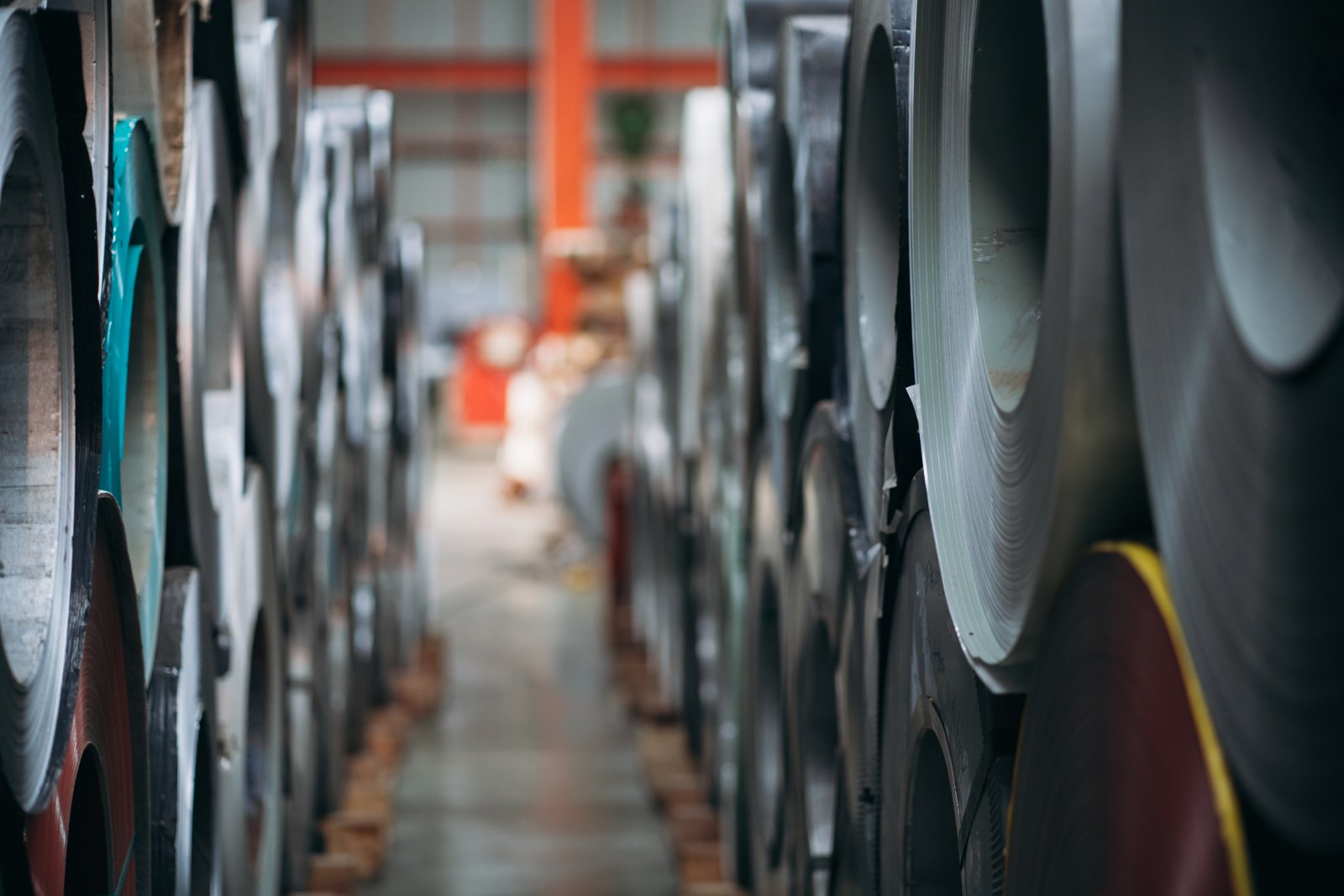
The battle against black spots and oxidation in copper annealing is fundamentally about creating an environment where the copper surface is protected from reactive contaminants and oxygen throughout the entire heating and cooling cycle. Black spots, as we've discussed, often stem from surface contaminants (oils, sulfur) reacting at high temperatures, while oxidation is the direct reaction of copper with oxygen or moisture. Therefore, a two-pronged approach is essential: first, ensuring the copper entering the furnace is impeccably clean, and second, maintaining a furnace environment that is non-reactive and actively protective. This isn't just about choosing the right furnace; it's about an integrated system of processes. For example, a client, "Apex Copper Tubing," was struggling with intermittent surface issues on medical-grade copper tubes. They had a decent annealing furnace, but their pre-cleaning was inconsistent, and they had minor air leaks around the furnace door seals. By upgrading their cleaning line to an ultrasonic system and implementing a rigorous maintenance schedule for their furnace seals, alongside optimizing their nitrogen-hydrogen atmosphere6 from their AKS furnace, they achieved a near-zero defect rate for surface finish. This highlights that solutions are often multifaceted, involving upstream processes, furnace integrity, and atmospheric management. At AKS Furnace, our Bright Annealing Furnaces are specifically engineered with these principles in mind, incorporating features like high-integrity muffles, advanced atmospheric control systems with oxygen and dew point monitoring, and efficient cooling zones to provide a comprehensive solution against these common defects. However, the furnace is only one part of the equation; operational discipline and a thorough understanding of the underlying causes are equally vital.
Implementing Advanced Cleaning and Surface Preparation
The first critical step in preventing both black spots and oxidation is ensuring the copper material is thoroughly cleaned before it enters the annealing furnace. Any residual drawing lubricants, oils, grease, dirt, or even fingerprints can decompose, carbonize, or react at annealing temperatures, leading to black spots or other surface discolorations.
1. Degreasing: The initial stage often involves removing gross oils and greases. This can be done using solvent degreasers (vapor or liquid) or aqueous alkaline cleaners. The choice depends on the type of lubricant used and environmental considerations. For instance, chlorinated solvents, while effective, are being phased out due to health and environmental concerns. Modern aqueous cleaners with surfactants and builders are increasingly popular. For Apex Copper Tubing, switching from a simple solvent wipe to a multi-stage aqueous alkaline cleaning system made a significant difference.
2. Rinsing: Thorough rinsing after any chemical cleaning step is crucial to remove all traces of cleaning agents. Residual cleaners can themselves cause staining or react in the furnace. Deionized water is often preferred for final rinses to avoid water spots or mineral deposits.
3. Pickling (Optional but often beneficial): If there are light surface oxides or tenacious inorganic residues, a mild acid pickle (e.g., using sulfuric or citric acid solutions) can be employed. This etches the surface slightly, removing contaminants and oxides, and providing a fresh, active surface. However, pickling must be followed by meticulous rinsing and neutralization to prevent residual acid from causing issues.
4. Ultrasonic Cleaning: For parts with complex geometries or high cleanliness requirements, ultrasonic cleaning in an appropriate solution can be extremely effective. The cavitation effect dislodges fine particles and contaminants from recesses and surfaces that might be missed by other methods.
5. Drying: After wet cleaning processes, the copper must be thoroughly dried before annealing to prevent water spots and to avoid introducing excessive moisture into the furnace atmosphere, which can contribute to oxidation. Hot air drying or vacuum drying are common methods.
The selection of drawing lubricants upstream is also part of surface preparation. Using lubricants that are low in sulfur, chlorine, and ash content, and are easily removable, can significantly reduce the cleaning burden and the risk of black spots. I’ve seen companies invest heavily in furnaces, only to be let down by cutting corners on their lubricant selection or cleaning processes. It's an integrated system, and every step matters.
Mastering Protective Atmosphere Control
Once the copper is clean, maintaining a high-purity protective atmosphere within the annealing furnace during the entire heating, soaking, and cooling cycle is paramount to prevent oxidation and reactions leading to black spots.
1. Atmosphere Selection:
- For Bright Finish (No Oxidation): Highly reducing atmospheres are preferred. Dissociated ammonia (75% H₂, 25% N₂) is a cost-effective and highly effective choice. Nitrogen-hydrogen blends (typically 2-10% H₂) are also widely used, offering good control and safety. Pure hydrogen provides the ultimate reducing potential but is more expensive and requires stricter safety protocols. At AKS Furnace, many of our Bright Annealing Furnaces are designed to run efficiently on these hydrogen-based atmospheres.
- Purity is Key: Regardless of the gas, its purity is critical. Oxygen content should ideally be below 5-10 ppm, and the dew point should be below -40°C (preferably -50°C to -60°C for very bright finishes). This often requires using high-purity bottled gases or installing on-site gas generation and purification systems (e.g., molecular sieves, deoxo units).
2. Furnace Integrity: - Gas-Tightness: The furnace muffle or chamber must be leak-tight. Regular leak checks (e.g., pressure decay tests or helium leak detection for critical applications) are essential. Door seals, thermocouple entries, and any other penetrations are potential leak points. Our AKS furnaces feature robust, often water-cooled, door seals and all-welded muffle constructions to maintain integrity.
- Positive Pressure: Maintaining a slight positive pressure of the protective atmosphere inside the furnace helps prevent air ingress.
3. Atmosphere Monitoring and Control: - Oxygen Analyzers: Continuous monitoring of oxygen levels within the furnace (or at the exhaust) provides real-time feedback on atmosphere integrity.
- Dew Point Sensors: Monitoring the moisture content is equally important, as water vapor can be a source of oxygen.
- Flow Control: Precise control of gas flow rates ensures adequate purging and atmosphere turnover. Automated gas blending and flow control systems are standard on many modern furnaces, including those from AKS.
4. Purging Procedures: Before starting the heating cycle, the furnace must be thoroughly purged with the protective atmosphere to reduce the initial oxygen content to safe levels. Similarly, the load must be cooled under the protective atmosphere until it is below the temperature at which it would oxidize upon contact with air (typically <150°C for copper).
A client producing high-frequency Litz wire, "FineWire Specialists," had persistent issues with slight tarnishing that affected enamel adhesion. We helped them integrate an in-line oxygen and dew point monitoring system with their AKS continuous annealing furnace. This allowed them to pinpoint that their bulk nitrogen supply occasionally had dew point spikes. Installing an additional point-of-use gas dryer and setting tighter control limits on their hydrogen injection solved the problem, ensuring a consistently bright and adherent surface.
Optimizing Furnace Operation and Maintenance
Beyond cleaning and atmosphere, the furnace operation itself and its maintenance are crucial for defect-free annealing.
1. Temperature Uniformity and Control:
- Ensure the furnace provides uniform temperature across the entire copper load. Non-uniformity can lead to some parts being under-annealed and others being overheated, potentially exacerbating reactions that cause defects. Multi-zone heating control, as featured in many AKS furnaces, is vital for this.
- Accurate temperature measurement and control are essential. Calibrate thermocouples regularly. Avoid exceeding the optimal annealing temperature for the specific copper alloy and desired properties, as higher temperatures accelerate unwanted reactions and grain growth.
2. Cycle Time Optimization: - Use the shortest soak time necessary to achieve full recrystallization and the target properties. Unnecessarily long soak times increase the opportunity for contamination or subtle atmospheric issues to cause problems, and also promote grain coarsening.
3. Furnace Cleanliness and Material Compatibility: - The internal components of the furnace (muffle, hearth, conveyor belt, fixtures) should be made of materials that do not react with copper or outgas contaminants at annealing temperatures. High-quality stainless steels (like 310S or 316L), Inconel, or ceramics are often used.
- Regular furnace maintenance, including periodic burn-out cycles (if applicable, to remove accumulated residues) or cleaning of the muffle/chamber, is important.
4. Loading and Unloading Procedures: - Ensure that no external contaminants are introduced with the copper load.
- For continuous furnaces, effective inlet and outlet seals (e.g., nitrogen curtains, fiber baffles) are critical to minimize air ingress and conserve protective atmosphere.
Here's a checklist for troubleshooting black spots and oxidation:
| Area of Concern | Key Checks & Actions | Potential Impact if Ignored |
|---|---|---|
| 1. Pre-Cleaning | Lubricant type (sulfur/ash content)? Degreasing effective? Rinsing thorough? Drying complete? Pickling needed? | Black spots, carbon residue, stains |
| 2. Protective Gas | Correct gas type for bright anneal (H₂/N₂)? Purity (O₂ <10ppm, Dew Point <-40°C)? Gas supplier certs? Gas dryers? | Oxidation, tarnishing, black spots |
| 3. Furnace Integrity | Muffle/chamber leak-tight? Door seals effective? Positive pressure maintained? Purge cycle adequate? | Oxidation, high gas consumption |
| 4. Temp. Control | Temperature uniformity? Thermocouple accuracy/calibration? Correct setpoint for alloy? Avoid overheating? | Oxidation, grain issues, black spots |
| 5. Furnace Internals | Muffle/belt material compatible? Any build-up/residue? Regular burnouts/cleaning? | Contamination, black spots |
| 6. Cooling Cycle | Cooling under protective atmosphere until <150°C? Cooling zone efficiency? | Post-anneal oxidation, tarnishing |
By systematically addressing these areas, manufacturers can significantly reduce or eliminate black spots and oxidation. It often requires a holistic view, as we provided for Apex Copper Tubing and FineWire Specialists, integrating best practices in material preparation, atmospheric control, and furnace operation. This comprehensive approach is what we champion at AKS Furnace to help our clients achieve superior quality copper products.
Pre-cleaning prevents black spotsПравда
Thorough cleaning removes contaminants that can react during annealing to cause black spots.
Air leaks don't affect annealingЛожь
Even minor air leaks can introduce oxygen that causes oxidation during the annealing process.
What practices should be adopted to control grain-coarsening in copper annealing?
Are you struggling to achieve consistent mechanical properties in your annealed copper due to variable grain sizes? Uncontrolled grain coarsening can lead to overly soft material, poor formability, or undesirable surface finishes. Adopting precise control practices is key to producing copper with the desired microstructure.
To control grain-coarsening in copper, adopt practices such as precise annealing temperature control, optimizing soaking time, managing the degree of prior cold work, and selecting appropriate copper grades. Regular metallographic analysis is vital for process validation and adjustment.
Achieving the target grain size is not just an academic exercise; it directly impacts the copper's performance in downstream applications, from its strength and ductility to its behavior during forming processes like stamping or deep drawing. As an engineer at AKS Furnace, I've frequently collaborated with clients to fine-tune their annealing cycles to prevent excessive grain growth while ensuring complete recrystallization. It's a balance that requires understanding the underlying metallurgy and implementing disciplined operational controls.
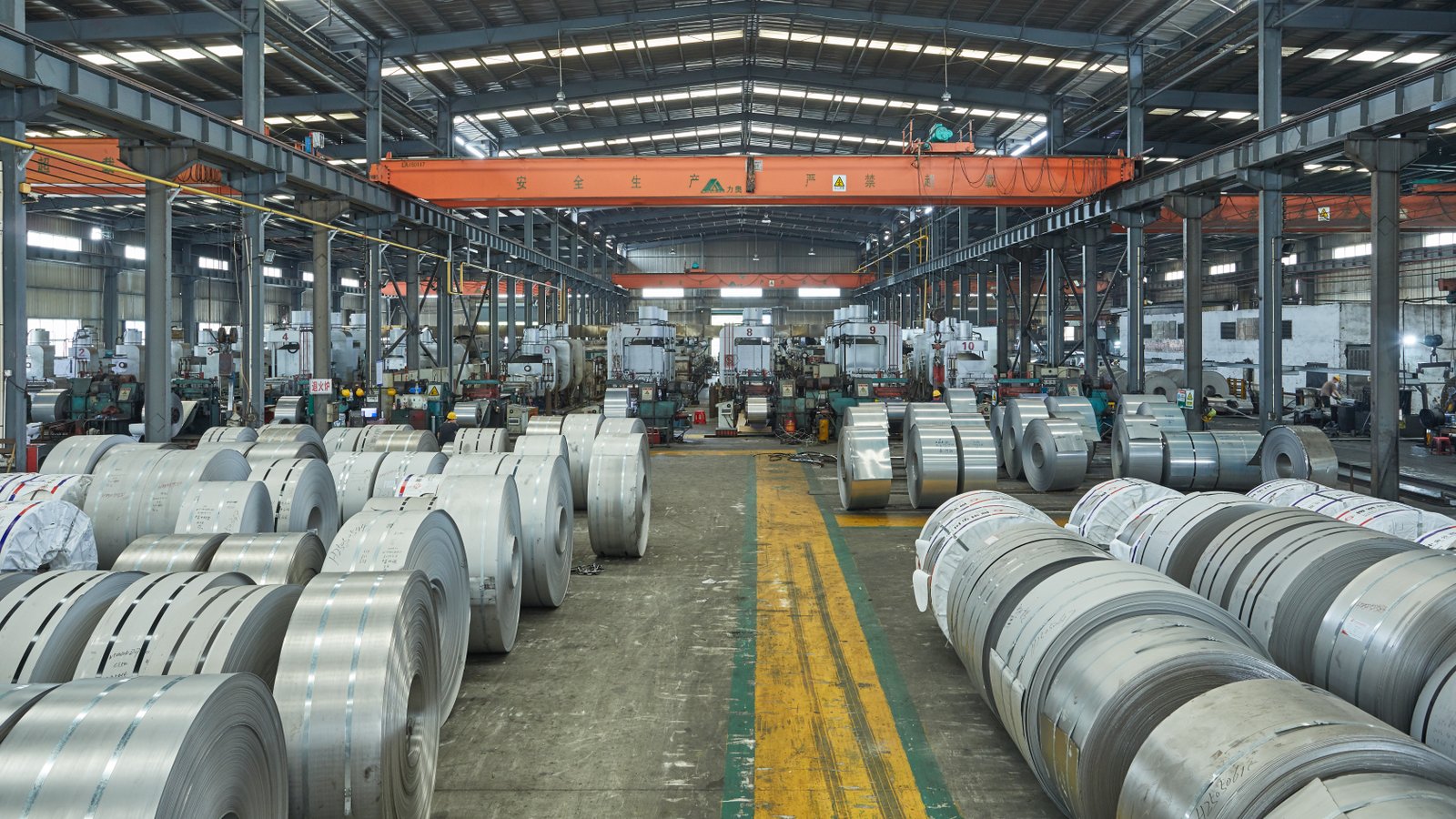
Controlling grain coarsening in copper annealing is a delicate dance between achieving the necessary softening through recrystallization and preventing the subsequent, often undesirable, growth of these newly formed grains. The goal is to produce a microstructure that imparts the optimal combination of properties – strength, ductility, formability, and surface finish – required for the end application. Excessive grain coarsening, as we've seen, can lead to issues like the "orange peel" effect on formed surfaces, reduced yield strength, and potentially lower fatigue life. I remember a client, "ElecComponent Solutions," who manufactured precision stamped connectors. They were experiencing inconsistencies in the spring-back of their parts after forming. Our investigation, which included metallography, revealed significant variations in grain size from batch to batch, directly linked to minor fluctuations in their annealing furnace's temperature and slightly inconsistent soak times. By helping them implement tighter temperature controls with their existing AKS Bell-Type furnace (calibrating sensors and optimizing the PID loops) and standardizing their soak times based on load size, they were able to achieve a much more consistent grain structure (target ASTM размер зерна7) and significantly improve the dimensional stability of their connectors. This experience underscores that control over grain coarsening is not just about having advanced equipment, but also about meticulous process management and understanding the critical parameters that influence grain growth kinetics in copper. These parameters primarily include the annealing temperature, the duration of exposure to that temperature (soaking time), and the metallurgical state of the copper before annealing, particularly its degree of prior cold work and intrinsic purity.
Optimizing Annealing Temperature and Time
The annealing temperature and the soaking time are the most powerful levers for controlling grain growth in copper. As dictated by the Arrhenius relationship for grain growth kinetics, even small increases in temperature can dramatically accelerate the rate at which grains coarsen.
1. Precise Temperature Selection: The annealing temperature must be carefully chosen. It needs to be high enough to ensure complete recrystallization of the cold-worked structure within a reasonable time, but not so high that it promotes rapid grain growth beyond the desired size. For many common copper alloys, this "sweet spot" can be quite narrow. For example, for heavily cold-worked C11000 copper, full recrystallization might occur around 300-400°C, but annealing might be done at 450-650°C to achieve specific softness levels and grain sizes. Exceeding this range without careful consideration can lead to rapid coarsening. It’s crucial to establish this optimal temperature through empirical trials and metallographic verification for each specific copper grade and desired outcome.
2. Temperature Uniformity and Accuracy: Achieving the target temperature isn't enough; this temperature must be uniform throughout the entire copper load, and the furnace's control system must maintain it accurately. Temperature gradients within the furnace can lead to a mixed grain structure, with some parts of the load having finer grains and others coarser grains. This is why AKS furnaces emphasize multi-zone heating and precise PID controllers. Regular calibration of thermocouples and temperature controllers is a non-negotiable maintenance task. I always recommend clients like ElecComponent Solutions to have a yearly calibration schedule by certified body8.
3. Controlled Soaking Time: Once the copper reaches the set annealing temperature, the soaking time (or time at temperature) becomes the next critical parameter. Grain growth is time-dependent. While recrystallization might be complete relatively quickly, continued soaking will allow grains to grow larger. The soaking time should be minimized to what is necessary to achieve through-section temperature uniformity and complete recrystallization. For continuous annealing lines, this translates to precise control of the strip or wire speed through the furnace. For batch furnaces, it's the duration of the hold at the soak temperature. Short-cycle annealing, where feasible, is often preferred to limit grain growth. For instance, induction annealing, which allows for very rapid heating and short soak times, can often produce finer grain structures compared to conventional furnace annealing if coarsening is a major concern.
A study in the Journal of Materials Engineering and Performance on C10200 (OFHC) copper showed that increasing annealing temperature from 500°C to 700°C (for 1 hour) could increase grain size from approximately 25 µm to over 100 µm. Similarly, at a constant 600°C, increasing soak time from 30 minutes to 2 hours could double the grain size. This sensitivity highlights the need for precision.
Managing Prior Cold Work and Material Condition
The condition of the copper до it enters the annealing furnace significantly influences the recrystallization behavior and subsequent grain growth.
1. Degree of Prior Cold Work: The amount of plastic deformation (e.g., rolling, drawing, stamping) the copper has undergone prior to annealing is a major factor. Higher degrees of cold work introduce more stored energy into the material, which acts as a greater driving force for recrystallization. This typically leads to:
- A lower recrystallization temperature.
- A finer recrystallized grain size, as more nucleation sites for new grains are available.
- A greater propensity for subsequent grain growth if the annealing temperature/time is not carefully controlled, due to the initially finer grain structure having more grain boundary area.
It's important for manufacturers to maintain consistency in their cold working processes to ensure a predictable starting condition for annealing. If one batch of copper coils has 40% cold reduction and the next has 60%, they will respond differently to the same annealing cycle, potentially resulting in different grain sizes.
2. Initial Grain Size: The grain size до cold working can also have an effect, though usually secondary to the amount of cold work itself for heavily worked materials. If the starting material already has a very coarse grain structure, it might behave differently during cold working and subsequent annealing compared to material with an initially fine grain structure.
3. Copper Purity and Alloying Elements: As mentioned earlier, impurities or minor alloying elements can significantly affect grain boundary mobility. High-purity coppers (like OFHC - Oxygen-Free High Conductivity) tend to exhibit faster grain growth compared to coppers containing small amounts of elements that can pin grain boundaries (e.g., phosphorus in DHP copper, or silver in some silver-bearing coppers). This is because these solute atoms or fine precipitates segregate to grain boundaries, exerting a drag force that impedes their movement. Therefore, the specific grade of copper being annealed must be considered when setting annealing parameters. A cycle that produces a 30 µm grain size in DHP copper might produce a 60 µm grain size in OFHC copper. We at AKS Furnace always ask for the specific material grade when discussing annealing solutions with clients like "AlloyTech Copper9", who process various specialty copper alloys.
For instance, research has shown that even parts-per-million levels of certain impurities can have a measurable impact on the recrystallization temperature and grain growth kinetics of copper. This is why consistency in raw material sourcing can also play a role in achieving consistent annealed properties.
Process Validation and Microstructural Monitoring
Theoretical calculations and initial parameter settings are a good starting point, but regular process validation and microstructural monitoring are essential to consistently control grain size.
1. Metallographic Analysis: The most direct way to assess grain size is through metallography. This involves taking representative samples from the annealed copper, preparing them (sectioning, mounting, grinding, polishing, and etching), and then examining them under an optical microscope. The average grain size can be determined using standard methods like ASTM E112 ("Standard Test Methods for Determining Average Grain Size"). This provides quantitative data that can be correlated with mechanical properties and processing performance. ElecComponent Solutions implemented a routine of sampling one part per batch for grain size analysis, creating a control chart that helped them quickly identify any process drift.
2. Mechanical Property Testing: Hardness testing (e.g., Rockwell F, Vickers) is a quick and indirect way to monitor the consistency of the anneal. While hardness is influenced by factors other than grain size, a significant deviation in hardness often indicates a change in the annealed condition, possibly related to grain size. Tensile testing can also be used to verify yield strength and elongation, which are related to grain structure.
3. Iterative Optimization: The annealing process should be viewed as subject to continuous improvement. If metallographic analysis shows that the grain size is drifting or not meeting specifications, the annealing parameters (primarily temperature and time) should be adjusted in small, controlled increments. The effect of these changes should then be verified through further testing. This iterative "plan-do-check-act" (PDCA) cycle is crucial for maintaining tight control over grain size.
4. Record Keeping: Maintaining detailed records of annealing parameters (temperature setpoints, actual furnace temperatures, soak times, load configurations, strip speeds), prior cold work history, copper grade, and the corresponding grain size and mechanical property results is invaluable. This data allows for trend analysis, troubleshooting, and informed decision-making when process adjustments are needed or new products are introduced.
Here's a table summarizing strategies for grain size control:
| Control Strategy | Key Action(s) | Desired Outcome | Common Pitfalls |
|---|---|---|---|
| Precise Temperature Control | Use lowest effective T; ensure uniformity (±5°C); calibrate TCs | Consistent, target grain size; avoid coarsening | Overheating; temperature gradients; inaccurate sensors |
| Optimized Soaking Time | Minimize time at T; ensure full recrystallization; control strip speed (continuous) | Prevent excessive growth; improve throughput | Insufficient soak (incomplete anneal); excessive soak |
| Consistent Prior Cold Work | Standardize reduction schedules; monitor upstream processes | Predictable recrystallization behavior | Variable cold work leading to inconsistent grain size |
| Material Awareness | Know copper grade (OFHC, ETP, DHP, alloys); understand impurity effects | Tailor anneal cycle to material | Using generic cycle for all copper types |
| Metallographic & Property Monitoring | Regular ASTM E112; hardness/tensile tests; control charts | Verify grain size; detect process drift; data for C.I. | Infrequent testing; not correlating with process params |
By diligently applying these practices – optimizing temperature and time, managing material condition, and consistently monitoring the output – manufacturers can effectively control grain coarsening in copper. This ensures that the annealed material meets the stringent mechanical property and formability requirements of modern applications, a goal that we at AKS Furnace actively support through our precision-controlled annealing solutions and technical expertise.
Higher cold work reduces recrystallization temperatureПравда
Greater plastic deformation increases stored energy, lowering the temperature needed for recrystallization to begin.
OFHC copper resists grain growth better than DHPЛожь
DHP copper's phosphorus content creates grain boundary pinning effects that better inhibit grain growth compared to pure OFHC copper.
Заключение
Effectively fixing copper annealing defects like black spots, oxidation, and grain-coarsening hinges on meticulous pre-cleaning, precise atmospheric control within a well-maintained furnace, and optimized temperature/time parameters. Implementing these practices ensures high-quality, consistent copper products for all your demanding applications.
-
Learn about AKS Furnace's solutions to achieve bright copper finishes in annealing. ↩
-
Understand copper oxidation tendencies during annealing through Ellingham diagrams. ↩
-
Discover common issues resulting from excessive grain growth in annealed copper. ↩
-
Identify the factors leading to an "orange peel" surface during copper processing. ↩
-
Find out how activation energy influences grain growth rate during copper annealing. ↩
-
Discover how nitrogen-hydrogen atmospheres optimize copper annealing for surface quality ↩
-
Learn about ASTM grain size classifications and their implications for material properties ↩
-
Discover the role of temperature calibration in ensuring accurate annealing processes ↩
-
Explore the types of copper alloys processed by AlloyTech for specialized applications ↩
У вас есть вопросы или нужна дополнительная информация?
Свяжитесь с нами, чтобы получить индивидуальную помощь и квалифицированный совет.
